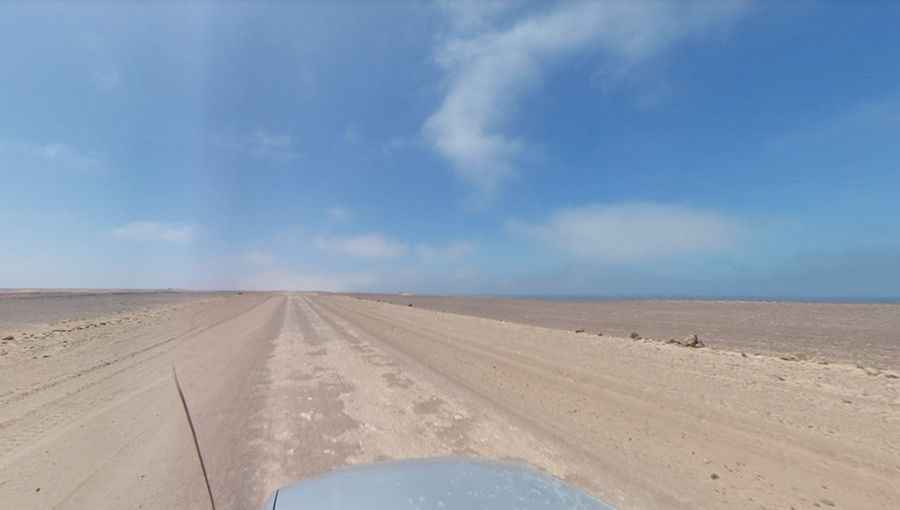Salt and mud on the 4x4 Skeleton Coast Road
Located along Namibia’s hauntingly barren Skeleton Coast, in the country’s northwest, the Skeleton Coast Road is one of the most stunning drives in the world.

Where is Skeleton Coast?
The road is tucked away in the Skeleton Coast National Park, in the northern part of the Atlantic coast of Namibia, between the coast and the central plains, near the Angola border, in southwest Africa.
Why is the Skeleton Coast famous?
The coast is famous all over the world for the many shipwrecks which litter its shoreline. Nicknamed the world’s largest ship cemetery, the reason for the wrecks is the thick fog that occurs there when the warm air from the desert meets the cold moist air coming in from the Atlantic Ocean. Further north is the Cape Cross Seal Reserve.
Can you drive to Skeleton Coast?
The road, officially known as C34-D2302, is 437 km (271 miles) long. The surface of this road is sand and salt and runs south-north from the old German colonial town of Swakopmund to the tiny settlement of Terrace Bay. The road takes you through a desert area almost completely empty but for the occasional shipwreck embedded in the sand. The sense of being very close to the end of the world is overpowering.
How remote is the road to Skeleton Coast?
Along the drive, you’ll feel like you're on the edge of the world and surrounded by sand and very little else for miles and miles in all directions. Petrol stations are rare sightings along the road, so it is best to fill up with fuel whenever possible. The road, also known as the Skeleton Coast Freeway, is extremely lonely in a remote and little-visited place.
Is the Skeleton Coast Road paved?
The road along the coast is a "salt" road, which is smoother than an asphalt road and very nice to drive on. But when there is mist from the ocean, the road gets very slippery, a bit like black ice. The road comprises tarmac, gravel, sand, and even salt-paved. 4x4 vehicles only with sufficient spares and water.
Is the Skeleton Coast Road dangerous?
You are requested to drive, even in daylight, using your headlights to alert oncoming vehicles of your presence. The mirage effect along this coast is common. Following heavy mist, the salt road becomes very slippery. Please drive accordingly. In the unlikely event of it raining, you are advised not to make use of the road. There is little traction on the surface even for 4x4s. Salt and mud accumulate on the vehicle and are costly to remove. Driving on the road when it has been softened by rains will damage the surface even further, making it longer and more costly for the Roads Authority to repair the road to a serviceable condition. Do not attempt to drive across the salt pans, even in a 4X4. Although Namibia has used the metric system for over forty years, you will notice that all of the distance signs along the Skeleton Coast Road are marked in miles and not kilometers.
Pic: Florian Habenicht